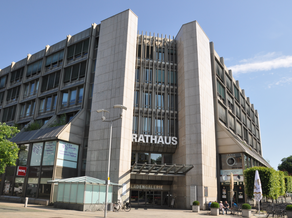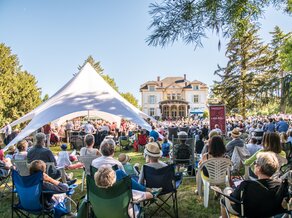„Schwefelquelle“ hieß sie früher und wird auch heute noch im Volksmund so genannt, denn das Wasser schmeckt und riecht nicht gerade angenehm. 1856/57 erbohrt und später nach der schönen Gattin des Landgrafen Gustav benannt, erfreute sich die Quelle (Natrium-Calcium-Chlorid-Hydrogen-Carbonat-Wasser) im 19. Jh. aufgrund der Heilkraft bei Herz-Kreislauf-Erkrankungen großer Beliebtheit - angeblich vor allem bei russischen Kurgästen. Die gefasste Quelle lag ursprünglich "etwa 100 Schritte links von der Allee" und hatte einen wunderschönen Überbau in Form eines gußeisernen Tempels mit filigranen Zierelementen und einer markanten Kuppel. In den 1920er Jahren wurde die Quelle mehr und mehr vernachlässigt und schließlich auf Veranlassung eines Badearztes an ihren heutigen Standort, in die Senke neben dem Landgrafenbrunnen, verlegt. Übrigens: Die als heilkräftig geltende Schwefelquelle unterstützt Herz und Kreislauf – auch wenn ihr Geschmack „gewöhnungsbedürftig“ ist. Wer sich dennoch traut, einen ordentlichen Schluck davon zu nehmen – an der neuen Zapfstelle kann das Wasser übrigens direkt entnommen und probiert werden.




